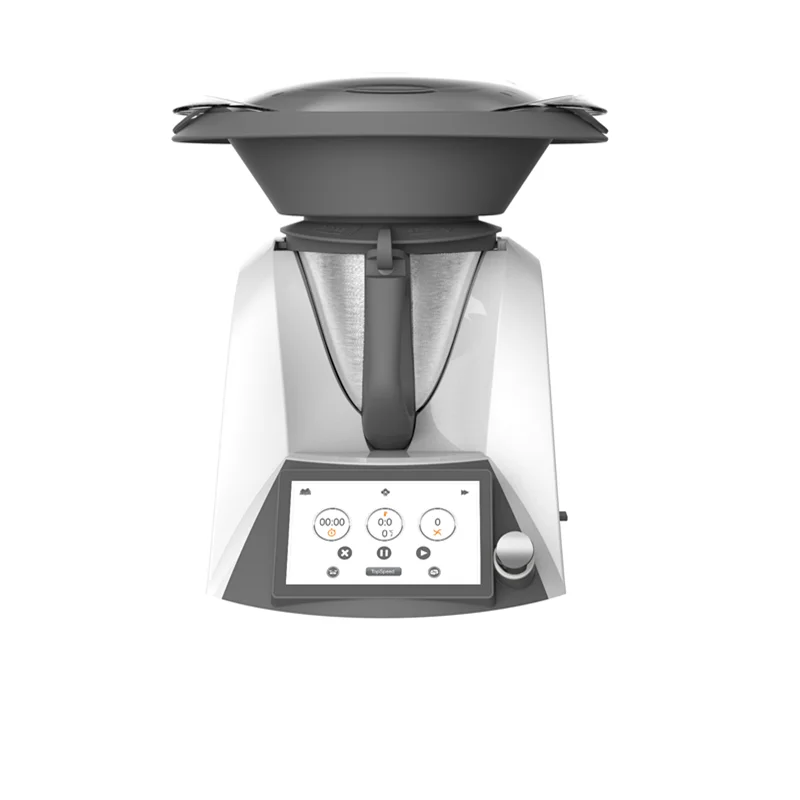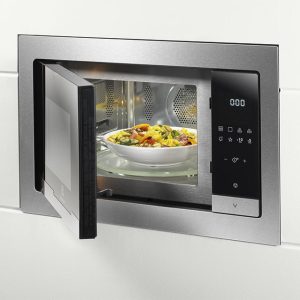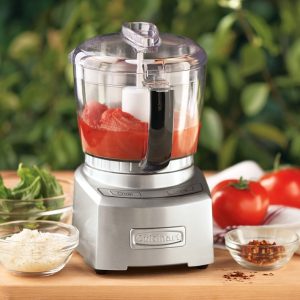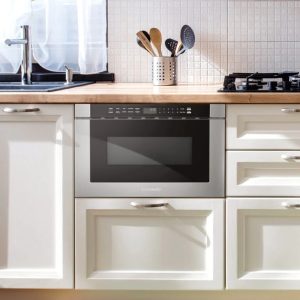
Creative Alternatives for Blending and Mixing
When recipes call for a food processor and you don’t have one, don’t fret. There are a number of creative ways you can blend and mix ingredients without needing the exact appliance. These food processor alternatives allow you to achieve similar results by utilizing other tools commonly found in your kitchen.

Using a Blender for Soft Foods and Liquids
A standard blender is a great substitute for food processors, especially when working with soft foods or liquids. Blenders are great for making smooth purees, sauces, and soups. For instance, to create a delicious fruit smoothie or a creamy soup, simply add the ingredients into the blender and mix until you reach the desired consistency. Remember to do it in smaller batches if your blender isn’t large. This can prevent spills and ensure everything blends well.
For best results:
- Use blenders for ripe fruits, cooked vegetables, and soaked nuts.
- Blend in small batches for even consistency.
- Avoid over-blending to prevent turning chunky mixtures into liquids.
The Versatility of Immersion Blenders
Immersion blenders shine in their convenience and ease of use. They allow you to blend directly in a pot or bowl, which is perfect for pureeing hot soups or whisking together sauces. They blend efficiently and clean up is often just a quick rinse under the tap. These handy devices offer a more hands-on approach and give you control over the texture of your dish. They are ideal for small kitchens due to their compact size.
Advantages include:
- Less cleaning as you blend in the cooking pot.
- Fresh flavors as food is blended right before serving.
- Compact design that’s easy to store.
Use the immersion blender for quick blending tasks and save time in the kitchen.
Manual Techniques for Food Preparation
When kitchen gadgets are scarce, manual techniques shine. They offer texture, flavor, and hands-on control over food prep. Let’s explore some manual methods for blending and mixing without a food processor.
Grating Ingredients for Texture and Flavor
A good old-fashioned grater can be a food processor alternative. It’s perfect for making cauliflower rice or adding zest to recipes.
- Grate cheese, vegetables, or zest easily.
- It gives texture and flavor that machines can’t match.
- Choose from fine to coarse textures.
The Time-Honored Pestle and Mortar Approach
For crushing and releasing flavors, a pestle and mortar are ideal.
- They ground spices and herbs to perfect texture.
- You control the grind, from coarse to fine.
- It’s a tactile way to unleash full flavor.
Chopping Skills with Knives for Precision Cuts
Knives are the ultimate food processor alternative.
- They chop, dice, and mince with precision.
- It takes practice but offers control over cuts.
- You save time and effort with good knife skills.
Master these manual techniques and any recipe is possible, no food processor needed!
 MacGyvering Kitchen Tools for Specific Tasks
MacGyvering Kitchen Tools for Specific Tasks
When you lack a food processor, getting creative with everyday tools is key. Discover how you can accomplish specific kitchen tasks using items you already have.
Crafting Breadcrumbs with a Rolling Pin and Bag
No food processor? No worries. You can still make fresh breadcrumbs for topping casseroles or for breading. Just toast your bread, place the slices in a reusable bag, and roll or crush them with a rolling pin. This gives you full control over the size of your crumbs.
For great breadcrumbs:
- Toast bread until crisp.
- Crush in a bag using a rolling pin.
- Check for your preferred crumb size.
This method is simple and doesn’t require expensive gadgets.
Achieving Purees with Boiling and Mashing
Create smooth purees without a food processor by boiling your ingredients and then mashing them. A potato masher is perfect for this task. For an even smoother texture, you can strain the puree through a sieve.
Steps for pureeing:
- Boil ingredients until very soft.
- Mash to the desired consistency.
- Strain for extra smoothness if needed.
This technique works well for making sauces, coulis, and baby food.
Budget-Friendly Kitchen Gadgets
When on a budget, you don’t always need pricey appliances to get the job done. Uncover cost-effective kitchen gadgets that are perfect as food processor alternative.
The Handy Appeal of Manual Food Choppers
Manual food choppers are a affordable lifesaver in the kitchen. Easy to use with a simple pull-cord, they chop veggies like onions and carrots in moments. Their small size also means less storage space is needed. It’s an ideal, wallet-friendly option for small tasks.
The Retro Charm of Food Mills and Moulis
Food mills and moulis bring old-fashioned charm and efficiency to modern kitchens. Perfect for purees and sauces, they sieve out seeds and pulp, leaving a smooth product behind. These gadgets are gentle on foods, often resulting in better flavors. They are also budget-friendly and simple to use, especially for silky smooth mashed potatoes or homemade baby food.
Grinding and Crushing for Flavorful Results
Grinding and crushing are key to releasing the full potential of certain ingredients, particularly when making spices, pestos, and pastes. You can achieve this without a food processor.
Exploring the Benefits of Ground Spices with a Mortar
Using a mortar and pestle for your spices is a game changer. This time-tested method not only offers a good workout for your arms but also ensures that spices maintain their essential oils and robust flavor. High-speed grinding in food processors can heat spices, causing flavor loss. With a mortar and pestle:
- You control the texture, from coarse to a fine powder.
- Spices stay cooler, preserving taste and aroma.
- Perfect for creating blends specific to your recipe needs.
- It’s a simple tool, no need for electric power.
Grinding spices by hand allows the spices to shine in dishes like curries and rubs.
Homemade Pestos and Pastes Without the Processor
Making homemade pestos and pastes is not only possible but can be preferable without a food processor. Here’s how:
- Using a mortar and pestle blends ingredients without overprocessing.
- This method crushes the leaves and seeds gently, which can enhance flavor.
- It offers control over the consistency, from chunky to smooth.
- It’s more immersive; you feel connected to the food you’re making.
For pestos, the gentle crushing action allows basil and pine nuts to release their oils slowly, creating a vibrant taste. For pastes, like those needed for hummus, the texture is unmatched. No appliance needed; just patience and some elbow grease.
 Tips for Those Without a Food Processor
Tips for Those Without a Food Processor
Even without a food processor, your culinary creativity need not be limited. Here are some practical tips to help you continue to create delicious dishes with ease.
Efficient Onion Cutting Techniques with Knives
Knives can be just as effective as food processors for cutting onions. Here is a simple method to reduce tears and achieve finely diced onions:
- Use a sharp knife for clean cuts.
- Cut the onion in half and peel it.
- Make horizontal and vertical cuts, then dice.
- Rinse the knife under cold water to reduce onion vapors.
This knife method gives you control over the size of your onion pieces.
Making Biscuit Crumbs Old-School Style
You don’t need a food processor to make perfectly crumbled biscuits for desserts. Here’s a straightforward way to do it:
- Place the biscuits in a sealable plastic bag.
- Press out the air and seal the bag.
- Crush the biscuits with a rolling pin until fine.
- Check the bag to get crumbs of the size you want.
Using this manual method, you can easily create a base for treats like cheesecakes or pie crusts.





